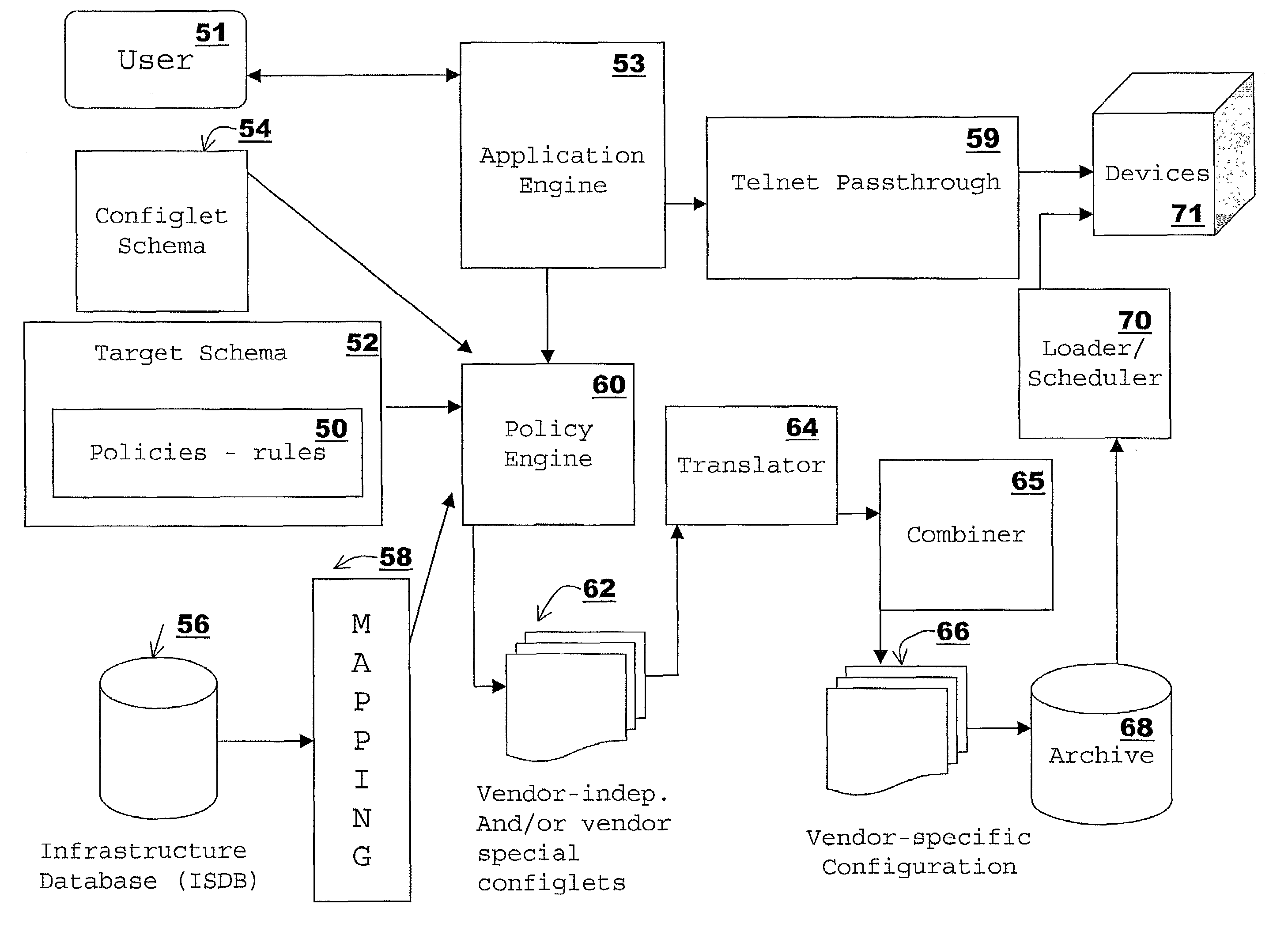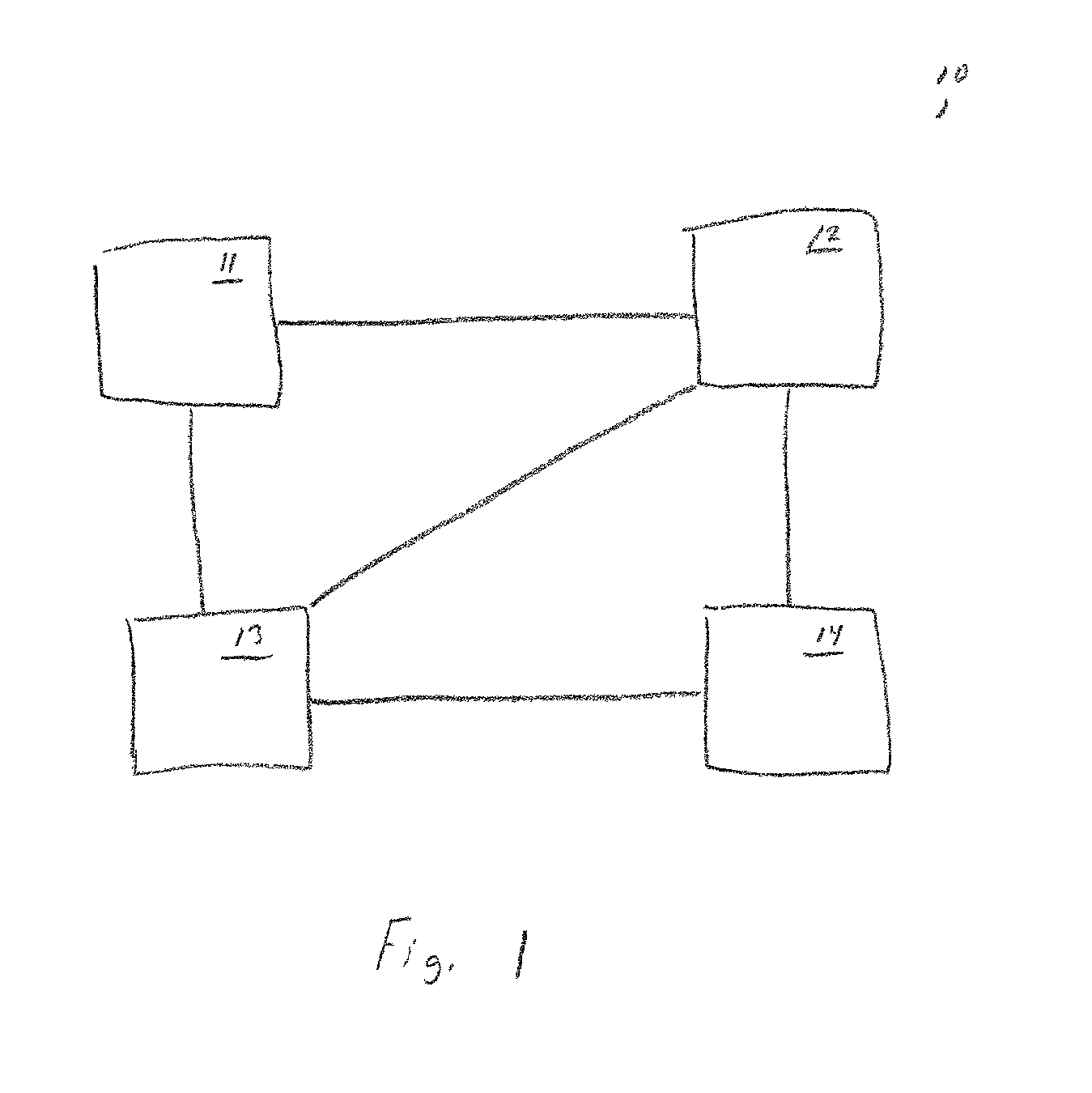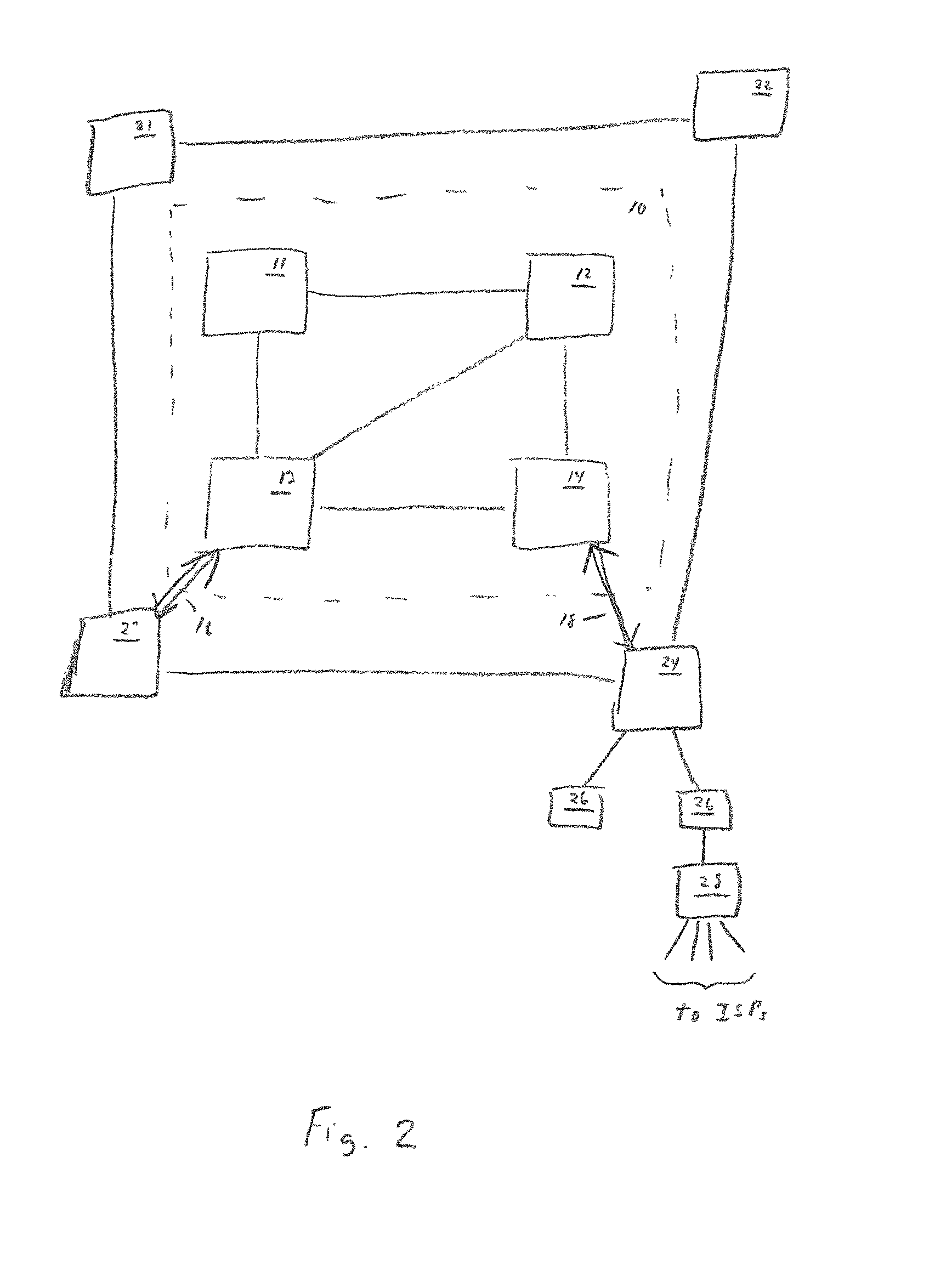Network configuration manager
a network configuration manager and network configuration technology, applied in data switching networks, instruments, unauthorized memory use protection, etc., can solve problems such as poor service quality and even service outages, and new services that are too complex and difficult to be manually configured,
- Summary
- Abstract
- Description
- Claims
- Application Information
AI Technical Summary
Benefits of technology
Problems solved by technology
Method used
Image
Examples
example policy
[0124]The following is a policy written in accordance with an embodiment of the present invention, for illustrative purposes. This policy creates interface configlets and sets the IP address.
[0125]Note that the condition always returns the value 1, i.e., true, so that the corresponding action is always performed.
[0126]At step 1 of the action, the Perl extension Formulator::CreateConfiglet( ) creates an “Interface”-type configlet named “ether0” for the target instance passed in with the arguments. The second call to Formulator::CreateConfiglet( ) creates a child configlet of type “LogicalInterface” with the first configlet as the parent.
[0127]At step 2, the IP address and mask are extracted from the infrastructure database for the given target instance.
[0128]In step 3, if the IP address and mask are not blank, they are used to set certain properties of the LogicalInterface configlet.
[0129]
# Rule #1: SetupInterfaces# This policy rule creates interface configlets.# It also sets the IP ...
PUM
 Login to View More
Login to View More Abstract
Description
Claims
Application Information
 Login to View More
Login to View More - R&D
- Intellectual Property
- Life Sciences
- Materials
- Tech Scout
- Unparalleled Data Quality
- Higher Quality Content
- 60% Fewer Hallucinations
Browse by: Latest US Patents, China's latest patents, Technical Efficacy Thesaurus, Application Domain, Technology Topic, Popular Technical Reports.
© 2025 PatSnap. All rights reserved.Legal|Privacy policy|Modern Slavery Act Transparency Statement|Sitemap|About US| Contact US: help@patsnap.com



